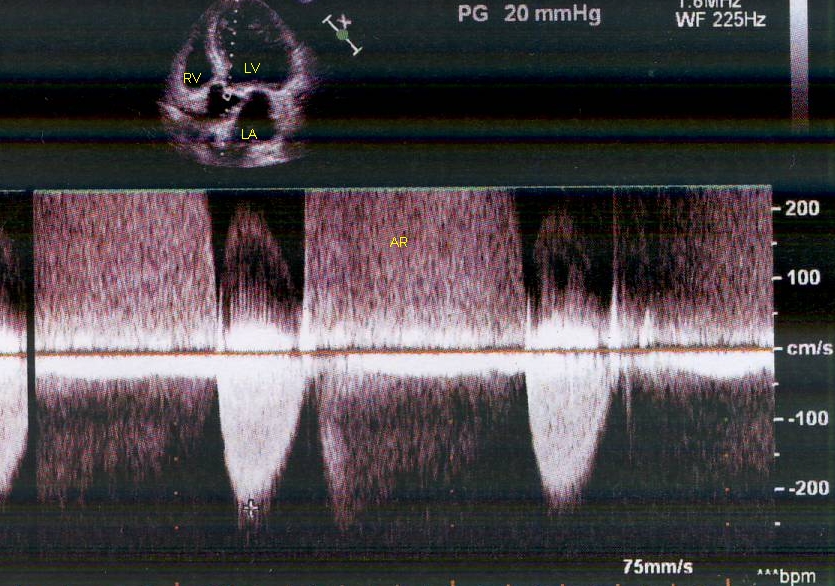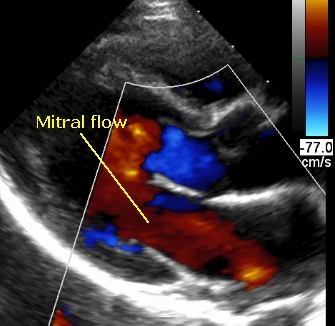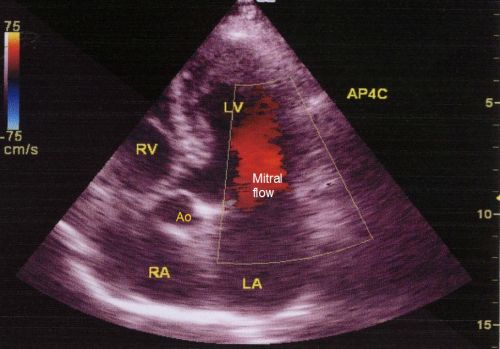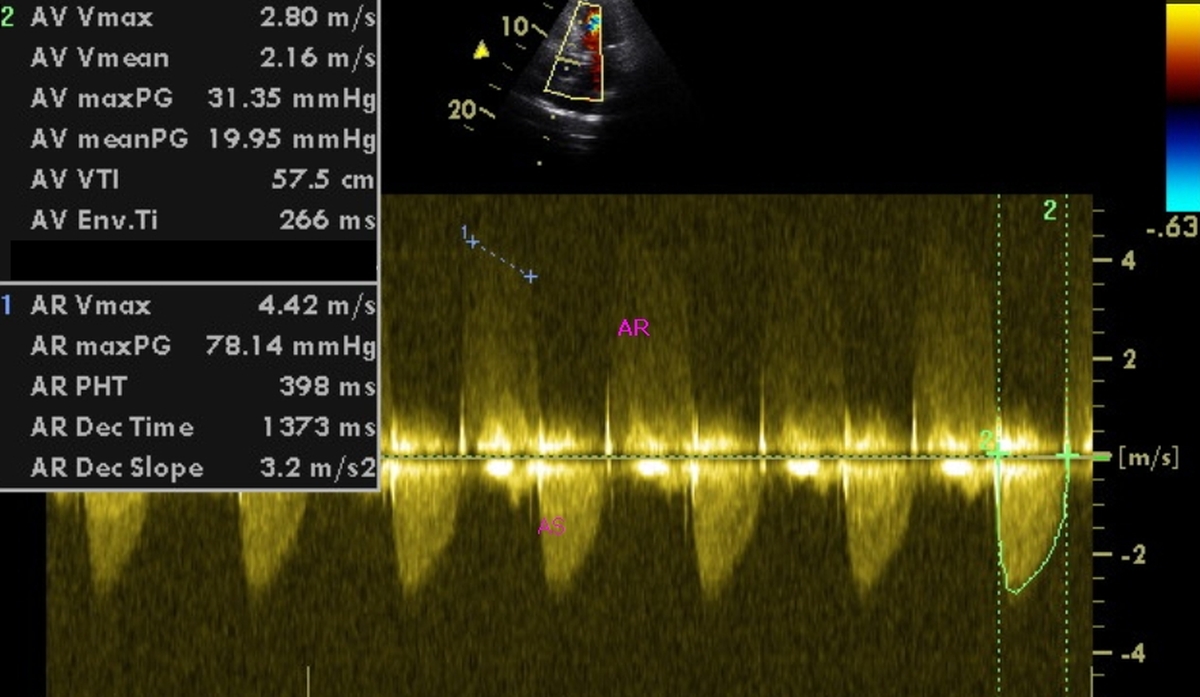Aliasing and Nyquist limit in Doppler echocardiography
Aliasing and Nyquist limit in Doppler echocardiography
Aliasing is a phenomenon in pulsed Doppler echocardiography in which when the velocity is beyond a particular limit known as the Nyquist limit, the direction of flow is depicted as opposite to that of the actual one. Nyquist limit is half the pulse repetition frequency of the ultrasound signal emitted by the Doppler transducer. Aliasing does not occur in continuous wave Doppler as the transmission of Doppler beam is continuous and not in pulses.

High pulse repetition frequency (HPRF) Doppler recording showing aortic regurgitation (AR) jet (above the baseline) with a cut off at the upper end and a wrap around seen below the baseline. Here aliasing is seen because the limit has been set just above 200 cm/second while the jet velocity is higher than that. The tracing can be depicted upwards to its full extent by adjusting the velocity limit or by adjusting the baseline downwards. The dense jet seen below the baseline is the forward aortic flow. The peak forward gradient is measured as 20 mm Hg, which does not indicate significant associated aortic stenosis.
Similar phenomenon can be seen in colour Doppler echocardiography as well. When the Nyquist limit is exceeded, a flow which should have been depicted as blue (away from the transducer) is depicted as red (towards the transducer). Nyquist limit of the colour Doppler is displayed at the upper and lower ends of the colour bar which may be displayed either on the right upper corner or left upper corner.

Here the flow away from the transducer (blue) has a Nyquist limit of -77 cm/s. Nyquist limit for the flow towards the transducer is not seen in this image as it has been cropped below that level.

In this image the colour bar is displayed on the left upper corner. Obviously, this is from a different machine. Both flow away from the transducer (red) and towards the transducer has a Nyquist limit of 75 cm/s.

Nyquist limits are different for colour Doppler and HPRF Doppler even during a single imaging session. In the image shown above, Nyquist limit for HPRF is about 5 m/s in both directions, so that aortic regurgitation jet with peak velocity of 4.42 m/s is seen to its full extent, above the baseline. In the same image, the Nyquist limit of the colour Doppler is only 63 cm/s. Hence the colour AR jet is seen as a mosaic jet in the inset. Multiple colors represent the variance in the velocity in each region due to the turbulence of the jet. Change in colour with variance in the velocity is displayed in the colour bar on the top right corner. The colour bar is not just red and blue, but a continuum of colors for varying velocities.



